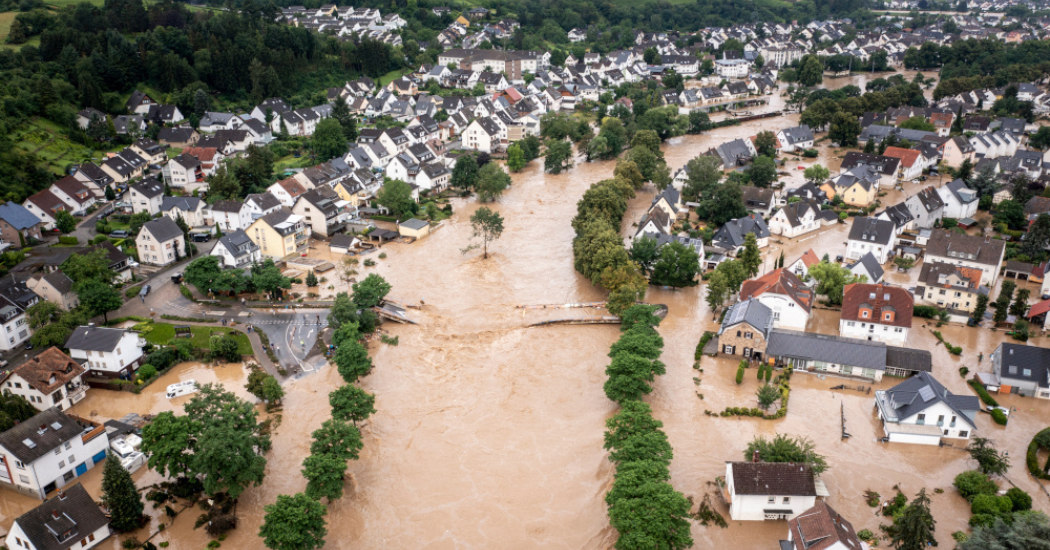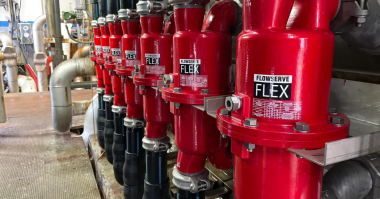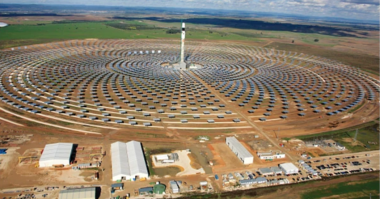Two-thirds of the world’s biggest cities — including Mumbai, New York and Shanghai — are threatened by rising sea levels1. About 150 million people live on land that will be below the high-tide line by 2050; that estimate is expected to increase as millions more move to coastal areas around the world2.
Inland cities are at risk, too. Climate change in combination with urbanization has intensified the severity of rainstorms, rendering the existing flood-control infrastructure in many metropolitan areas inadequate. Flood control failure has never been an option; countless lives and livelihoods depend on it. Climate change has only raised the stakes. Whether it’s the daily security of a major city or the ongoing reclamation of a nation’s low country, the right pumping solutions and flood control application expertise are required today — and for decades to come.
That’s why flood control systems from Flowserve extend far beyond the sale of conventional pumping equipment. We prioritize long-term resilience, environmental sustainability and the safety of ecosystems through the implementation of fish-safe technology.
Designing the right mix of pump size, reliability and efficiency
The top challenge in coastal regions is protecting against flooding due to rising sea levels. The increasing volume of water due to climate change necessitates the design and construction of larger pumping systems and/or retrofitting existing facilities to increase capacity.
Scaling up capacity enables municipal operators and regional water control boards to move more flood water from city streets into temporary drainage basins and reservoirs or pump it over dikes and flood walls into rivers and oceans. Reliability and capacity are essential pump characteristics in these applications; Flowserve offers both.
Commitment to sustainability: fish-safe technology
It’s not just about stopping floods. Flowserve’s industry-leading approach balances flood control with the conservation of vital aquatic ecosystems.
Flowserve engineers developed and tested patented fish- and eel-safe pump designs to maximize pass and survival rates according to the Dutch Standard Institute (NEN) 8775, while maintaining the optimum pump performance and efficiencies for new construction and retrofit projects. Our specialists have also been active parts of the team in charge of writing the standard, which defines the scope of fish safety for pumps and the formula used to predict a pump’s fish safety level. This standard is being considered by other European countries and is expected to be adopted in various regions, too.
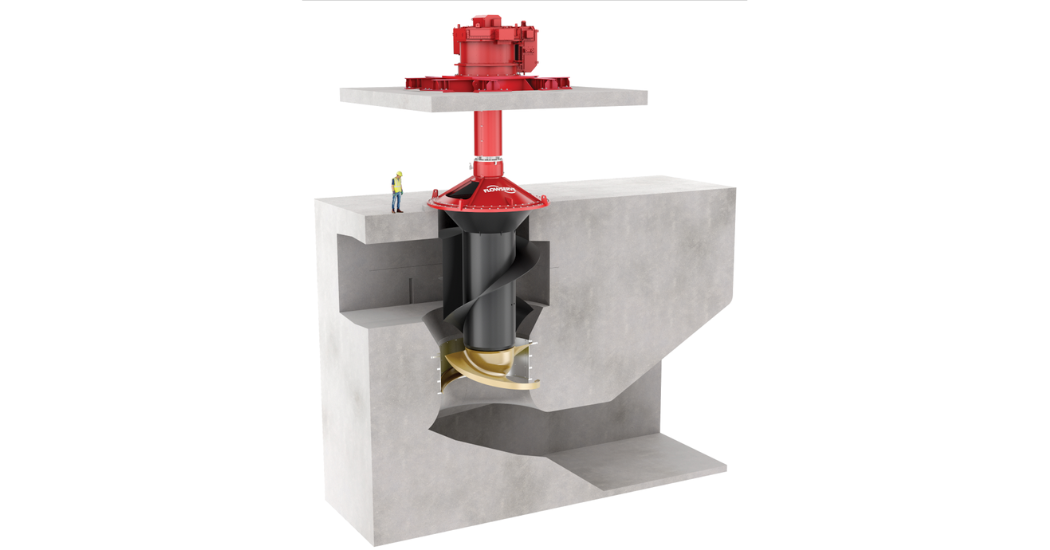 Pioneering flood prevention with concrete volute pumps
Pioneering flood prevention with concrete volute pumps
Case in point: the Flowserve CVP concrete volute pump. This innovative solution, which was developed in the Netherlands, is an excellent choice for pumping large volumes of water in order to prevent or control flooding.
Having developed the first CVP pump in the 1920s, Flowserve is a global leader in their design and manufacture, tailored to meet the distinctive demands of every project.
Made of prefabricated concrete segments for the volute housing and intake suction bell with a metallic pullout rotor, CVP pumps are integrated into civil construction to reduce installation costs. Capacity can reach 200,000 m3/h (880,000 gpm) and handle heads up to 60 m (197 ft).
Engineered excellence: Key CVP features and benefits
Plant operators benefit from a CVP pump design that provides:
- Concrete volute casing and suction bell
- Enhanced reliability
- Substantially reduces vibration
- Offers exceptional corrosion and erosion resistance
- Significantly extends pump life
- Lowers materials costs and maintenance
- Prefabricated elements
- Streamlined construction
- Reduces on-site time and costs
- Metallic, rotating pullout unit
- Versatile durability
- Includes shaft, impeller, cover, wear ring and bearings
- Material options tailored to application requirements
- Compact design
- Efficient footprint
- Minimizes excavation work, lifting heights and weights
- Statically balanced impeller
- Clog resistance
- Ensures uninterrupted operation
- Short, sturdy pump shaft
- Eliminates need for intermediate bearings
- Improves structural integrity
- Shaft sealing system
- Longevity and low maintenance
- Leak-free design increases pump reliability
- Inflatable static seal allows hassle-free component replacement
These vertical dry-pit pumps have a well-earned reputation for trouble-free operation with minimal maintenance for decades.
Unequalled hydraulic coverage and continuous wet-pit flexibility
In flood control and drainage applications where operators specify metallic pumps, outstanding reliability and extended service life are needed.
Multiple hydraulic combinations enable precise configuration to match unique conditions and maximize efficiency. Flowserve offers VCT vertical wet-pit pumps for continuous duty applications:
- Mixed-flow models are designed for medium to high capacity and low- to medium-pressure services. These pumps are available in single or multistage, heavy-duty configurations. They are typically used for water transfer.
- Axial-flow models are designed for higher capacities and low to very low pressures. These pumps are often used in drainage, flood control, water transfer and river intake applications due to the lower heads required.
- Capacity can reach 181,700 m3/h (800,000 gpm) and handle heads up to 110 m (350 ft).
High-capacity operation: key VCT pump features and benefits
Plant operators benefit from a VCT pump design that provides:
- Liquid end configurations
- Axially balanced wear rings for reduced thrust loads
- Enclosed impeller designs
- Conservative design stresses to enable extended pump life
- Multiple outer column designs
- Fabricated in a wide variety of materials
- Optimized sealing between flange faces reduce corrosion
- Precision flange rabbet fits and positioning pins ensure proper alignment and orientation
- Lineshaft bearing lubrication
- Extends bearing and pump life
- Engineering expertise to select optimal system for application, including self-lubricated, fresh water injection, oil or grease lubrication
- Axial thrust bearing assembly
- Withstands the total pump hydraulic thrust as well as the rotor weight
- Self-lubricating, anti-friction bearings are utilized for standard applications
- Sealing configurations
- Packed box with flexible graphite packing
- Mechanical seals provide increased reliability and functionality
- Multiple driver options
- Match process requirements with electric motors, diesel engines with right-angle gears and steam turbines
- Intake arrangements
- Multiple designs such as open pit, formed suction, suction elbow, vortex suppression basket and suction barrel provide flexibility
From Netherlands to Texas: Flowserve’s flood control success stories
Regardless of where they are located, flood control managers can benefit from the proven experience of coastal and inland projects such as those in the Netherlands and Dallas.
A mission-critical flood control project
In the Netherlands, the Afsluitdijk causeway dams off the Zuiderzee, a saltwater inlet of the North Sea, and turns it into the IJsselmeer, a freshwater lake. At 32.2 km (20 mi) long and 91.4 m (300 ft) wide, the causeway is an engineering marvel and a symbol of the Netherlands’ constant struggle against flooding from the sea.
When the Netherlands decided to renovate and improve the causeway, Flowserve supplied six CVPS pumps, capable of pumping 846,000 m3/h (3,724,769 gpm) in total, or nearly six Olympic-sized swimming pools per minute.
Their rugged, compact concrete construction virtually eliminates corrosion and vibration, which reduces maintenance labor and costs. And their pullout design simplifies installation and enables the pumps to be installed once the civil work is completed, further reducing costs.
Flowserve CVPS pumps not only meet the Afsluitdijk’s performance needs, but they also meet its environmental requirements by combining efficient hydraulics and pumping capabilities with a fish-safe design.
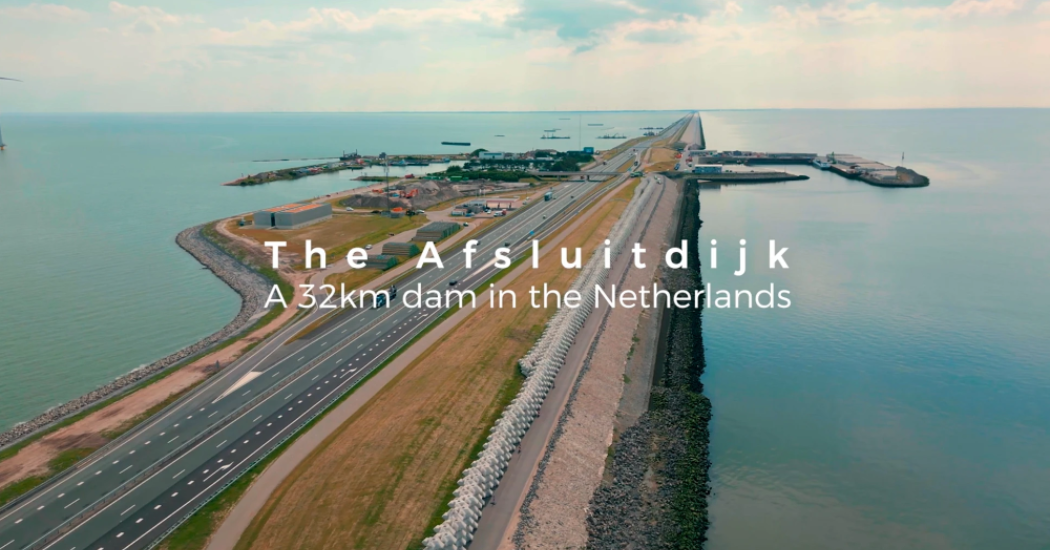 Increasing pumping capacity by 117% in Texas
Increasing pumping capacity by 117% in Texas
In Dallas, where a surge in rainfall from severe storms increases flood risk, the city decided to upgrade its flood control infrastructure. The Dallas Floodplain Management Team installed 11 Flowserve CVP pumps in its upgrades to pump stations. The team selected the CVP pumps because of their history of reliability and performance in large-scale European flood management projects.
With the CVP pumps, Dallas has increased its pumping capacity by 117%.
The city also lowered its total cost of ownership (TCO). Traditional metal pumps require annual refurbishing, but Flowserve CVP pumps can operate for decades with minimal maintenance. Lower maintenance requirements stem from the pump’s design, which limits vibration and resists corrosion and erosion.
Partner with a flood control engineering expert
As climate change and urbanization intensify flooding challenges, reliable and environmentally friendly pumping solutions will be instrumental in protecting people, the cities in which they live, and ecosystems worldwide.
What’s needed is high-capacity equipment that enables municipalities and regions to avoid or minimize flooding, prevent loss of life, and alleviate infrastructural and environmental damage. And Flowserve is the right partner, with extensive engineering and flood management expertise to help.
Discover the backbone of major flood control systems: Flowserve concrete volute pumps. Read More.
About Flowserve
Flowserve Corp. is one of the world’s leading providers of fluid motion and control equipment, systems and services. Our specialists enable municipal and industrial customers to meet critical challenges for drinking water, water transportation, wastewater, desalination, agriculture and irrigation, drainage and dry dock applications. By leveraging our capabilities and expertise, our customers can navigate large-scale projects — from the early engineering developmental phase through construction and commissioning to long-term maintenance and technical support.
Discover how partnering with Flowserve can help you successfully lead your water project by visiting their website.
- Manuela Andreoni, “Cities vs. Rising Seas,” New York Times, May 19, 2023, https://www.nytimes.com/2023/05/19/climate/climate-rising-seas-big-cities.html (accessed August 8, 2023).
- Manuela Andreoni, “Cities vs. Rising Seas,” New York Times, May 19, 2023, https://www.nytimes.com/2023/05/19/climate/climate-rising-seas-big-cities.html (accessed August 8, 2023).

